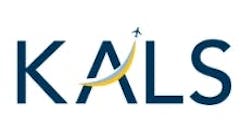Boeing Defense Officials ‘Lean Forward’ With Bets on Future Programs in St. Louis Area
BERKELEY — Boeing officials signaled, over the past week, that they are shifting their views on the types of defense work the company will take on, as it grows some programs, prepares to end others and embarks on a $1.8 billion expansion project here.
The company is becoming more open to projects where it serves not as the lead, or "prime" contractor, but as a subcontractor or partner, said Bernd Peters, vice president of business development and strategy.
"In areas where it makes sense for us to continue to be the prime (contractor), absolutely we will do that. But we are opening up the aperture, in instances where it makes sense," Peters said.
It wouldn't be an entirely new tactic for the company, which is a subcontractor on Lockheed Martin's F-22.
"We've got to get away from that, 'it's got to be made here' mentality," Peters said. "If the capability already exists out there, there's no pride in us saying 'it's got to be made here.' We will pull it from our suppliers."
At Boeing's complex near St. Louis Lambert Airport in Berkeley, the company plans to end new-build production of the F/A-18 fighter in 2027. Elsewhere on the campus, staff have designed the layout for a manufacturing line to build the T-7 trainer plane, and expect the first parts to arrive later this year. At a brand new, 300,000-square-foot factory across the river in Mascoutah, workers will begin assembling MQ-25 refueling drones later this year.
And the company is building a 1.1 million-square-foot manufacturing site next to its Berkeley offices for undisclosed programs.
In the world of aerospace, where decisions play out over the course of decades, Boeing is managing with choices made years ago. Airplanes that first hit the skies more than 40 years ago are still churned out of factories here, packed with new technology and equipment. A development program conceived in the 2010s may not deliver planes until the 2030s.
At the same time, the pandemic-era economy changed the industry's views on how aerospace companies should get paid.
Boeing and its peers went into the COVID-19 pandemic on the hook for fixed-price contracts, meaning that if costs run higher than expected, the manufacturers have to cover the difference. The next few years brought inflation, supply chain problems and historic labor shortages. Losses on those programs accelerated.
"We all went into those eyes wide open to what we were signing up to. What we didn't see coming was a pandemic," said Steve Nordlund, senior site executive for Boeing St. Louis.
Sean Liedman, Boeing's director of global reach, said Defense Department officials and executives across the industry have been re-examining that deal structure.
"You've seen defense executives and the Department having this conversation about how that model placed too much risk upon industry," Liedman said. "I think that we and our government partner have come to realize that that's not the right contracting model."
The St. Louis-made T-7 trainer plane and MQ-25 refueling drone are both fixed-price programs.
And as the company prepares to retire one of its longtime fighter jet lines, the F/A-18 Super Hornet, leaders are placing bets on new programs.
For a view of the company's long-range goals, observers may look across the street from the company's offices in Berkeley, to a plot of land where construction workers broke ground about six months ago on a new manufacturing site.
Nordlund told reporters on a recent tour that the project represents "a pretty big bet for the Boeing company." Officials confirmed this week that it will serve as a manufacturing facility for "advanced combat aircraft."
Some analysts believe the site is tied to the competition to build the next generation of fighter jet, or NGAD, for the Air Force, but given the secrecy of that program and Boeing's classified work, there isn't a firm consensus. Neither the company nor the service have confirmed that Boeing is a competitor.
Air Force officials have hinted, in recent weeks, that they are contemplating a delay to the competition. Some analysts point, as a cause, to budget constraints as the Air Force spends on modernization. Others suspect that the Air Force could be changing its view on what type of aircraft it wants.
Nordlund said he couldn't say whether the company is competing for that program, whether the expansion project is tied to the NGAD competition, or what other programs may one day occupy the site. ( Boeing has said the overall $1.8 billion expansion project is intended for "new aerospace programs," suggesting that the project doesn't hinge on any one contract.)
But, he said, while the company estimates finishing the site in 2026, it has "dials that we can turn" left or right, depending on what happens.
"We will take it one day at a time," Nordlund said. "But we're trying to lean forward to be ready for whatever our customer wants to do."
___
(c)2024 the St. Louis Post-Dispatch
Visit the St. Louis Post-Dispatch at www.stltoday.com
Distributed by Tribune Content Agency, LLC.




